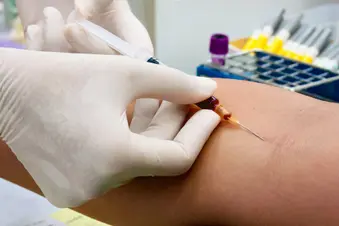
Remission is good news. It means most or all signs of your cancer are gone. In some types of cancer, remission may turn into a lasting cure. But when you have chronic lymphocytic leukemia (CLL), your symptoms are likely to eventually come back.
Still, remissions in CLL can last a long time. And when your cancer returns, you can choose to have more treatment. This can often lead to another remission. With repeat treatments and a healthy lifestyle, most people live with CLL for many years.
Remission Timeline
It’s hard to say how long your remission will last. It depends on your treatment, age, and overall health. Remissions may last as much as 3-5 years after your first retreatment. Because future retreatments usually don’t work as well as the first one, your next remissions may be shorter.
Work With Your Doctor
You and your cancer doctor are partners in your care, before, during, and after remission. Together, you’ll work out a plan to help you stay healthy. It might include:
A schedule for follow-up exams and tests, like blood and bone marrow tests.
A plan to check for other cancers. People living with CLL can still get other cancers, especially in the skin, lungs, or colon. They may be due to CLL itself or to your treatment. A second cancer can happen any time, even when CLL’s in remission. Tell your doctor right away if you have any new symptoms or problems. These could be from CLL or a new cancer. If you smoke, take steps to quit. Smoking doesn’t seem to cause CLL, but it’s a big cause of other cancers, along with many other conditions.
Learning about the long-term side effects of cancer treatment. These are called late effects, and they can show up months or years later. Late effects can include conditions like heart disease, lung failure, hearing loss, and brittle bones. They can also cause trouble with your memory and focus.
Take Care of Yourself
There’s no sure way to stay in remission, but a healthy lifestyle helps you take care of your whole body. This includes being physically active throughout your day, which can help you stay strong and boosts your energy and mood. Try for at least 30 minutes of moderate-intensity aerobic activities (like brisk walking at 2.5 miles per hour or faster, yard work, or biking less than 10 miles per hour) on most days. If you’re not active now, work up to that. Also, be sure you move around throughout your day instead of sitting a lot. Being active isn’t just about working out, and you don’t have to go to a gym to do it.
You’ll also want to eat lots of vegetables, fruits, nuts, whole grains, and lean protein -- and limit saturated fat, added sugars, and sodium. Many studies have linked this way of eating to a lower risk of conditions including heart disease, diabetes, and some cancers. And it can help you feel and live better overall.
Stress management and social support are also good self-care. If you’re in remission and worry that your cancer will come back, it can help to express your feelings to family, friends, and your care team and ask for their support. You might also want to join a support group or talk with a counselor. Your doctor or organizations such as the American Cancer Society and the Leukemia & Lymphoma Society can help you find one.
Show Sources
iStock/Getty Images
SOURCES:
National Cancer Institute: “Understanding Cancer Prognosis,” “Physical Activity and Cancer.”
American Cancer Society: “Living as a Chronic Lymphocytic Leukemia Survivor,” “Second Cancers After Chronic Lymphocytic Leukemia,” “What Are the Risk Factors for Chronic Lymphocytic Leukemia?”
Texas Oncology: “Relapsed Chronic Lymphocytic Leukemia.”
Leukemia & Lymphoma Society: “The CLL Guide: Information for Patients and Caregivers, Chronic Lymphocytic Leukemia,” “Long-Term and Late Effects for Cancer Survivors.”
U.S. Department of Health and Human Services: “Physical Activity Guidelines for Americans, 2nd Edition.”
American Institute for Cancer Research: “Vegetarian and Vegan Diets.”
Memorial Sloan Kettering Cancer Center: “Mediterranean Diet.”